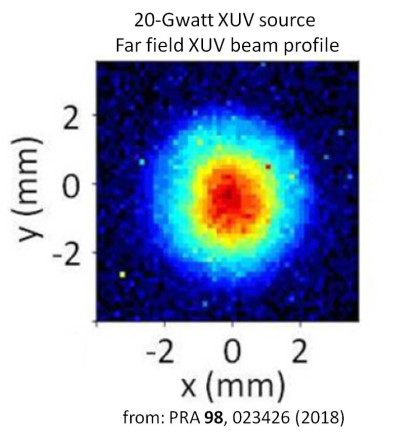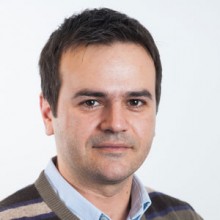 The long-standing scientific quest of real-time tracing electronic motion and dynamics in all states of matter has been remarkably benefited by the development of intense pulsed laser sources with a temporal resolution in the attosecond (1 attosecond (asec) = 10^-18 sec) time scale. In the last 15 years we have systematically developed the means for the generation of high photon flux extreme ultraviolet (XUV) pulses with 1fs to sub-fs pulse duration, making use of the process of higher order harmonic generation (HOHG). Utilizing multi-cycle laser pulses delivered by high peak Ti:S laser systems, in combination with Polarization Gating techniques [1], XUV pulse intensities up to 10^14 W/cm2 have been reached in the spectral region 10-24 eV. These pulses have been exploited in I) the temporal characterization of attosecond pulses [2-4]; II) the first proof of principle XUV-pump-XUV-probe experiments for the study of 1fs scale electron dynamics in atoms/molecules [5, 6], and III) quantitative studies of linear and non-linear ionization processes in XUV regime [7,8].
The long-standing scientific quest of real-time tracing electronic motion and dynamics in all states of matter has been remarkably benefited by the development of intense pulsed laser sources with a temporal resolution in the attosecond (1 attosecond (asec) = 10^-18 sec) time scale. In the last 15 years we have systematically developed the means for the generation of high photon flux extreme ultraviolet (XUV) pulses with 1fs to sub-fs pulse duration, making use of the process of higher order harmonic generation (HOHG). Utilizing multi-cycle laser pulses delivered by high peak Ti:S laser systems, in combination with Polarization Gating techniques [1], XUV pulse intensities up to 10^14 W/cm2 have been reached in the spectral region 10-24 eV. These pulses have been exploited in I) the temporal characterization of attosecond pulses [2-4]; II) the first proof of principle XUV-pump-XUV-probe experiments for the study of 1fs scale electron dynamics in atoms/molecules [5, 6], and III) quantitative studies of linear and non-linear ionization processes in XUV regime [7,8].
The latest technological advance towards an XUV high photon flux attosecond pulsed source is the newly constructed ≈ 18 m long (HHG) 20 GWatt XUV beam line [9]. The beam line beam line provides the highest ever XUV pulse energy (≈ 230 µJ per pulse) in the spectral region 20-30eV. The corresponding photon flux of 0.6 X 10^14 photons/pulse is competitive with FEL photon fluxes in this spectral region. Using these pulses a focused intensity of ~7 X 10^15 W/cm^2 has been achieved (a value that by using high reflectivity XUV optics can be increased to 10^17 W/cm^2) and multiply charged Argon atoms (Ar^4+) have been produced by multi-XUV-photon ionization processes.
References:
[1] P. Tzallas et al. Nature Physics 3, 846 (2007)
[2] P. Tzallas et al. Nature 426, 267 (2003)
[3] L. A. A. Nikolopoulos Phys. Rev. Lett.. 94, 113905 (2005)
[4] Y. Nomura et al. Nature Physics 5, 124 - 128 (2009)
[5] P. Tzallas et al. Nature Physics 7, 781 (2011)
[6] P. A. Carpeggiani, et al. Phys. Rev. A 89, 023420 (2014)
[7] N. Tsatrafyllis, et al., Sci. Rep. 6(1), 21556 (2016).
[8] P. Tzallas, et al., J. Opt. 20(2), 024018 (2018).
[9] A. Nayak et al., Phys. Rev. A 98, 023426 (2018)



